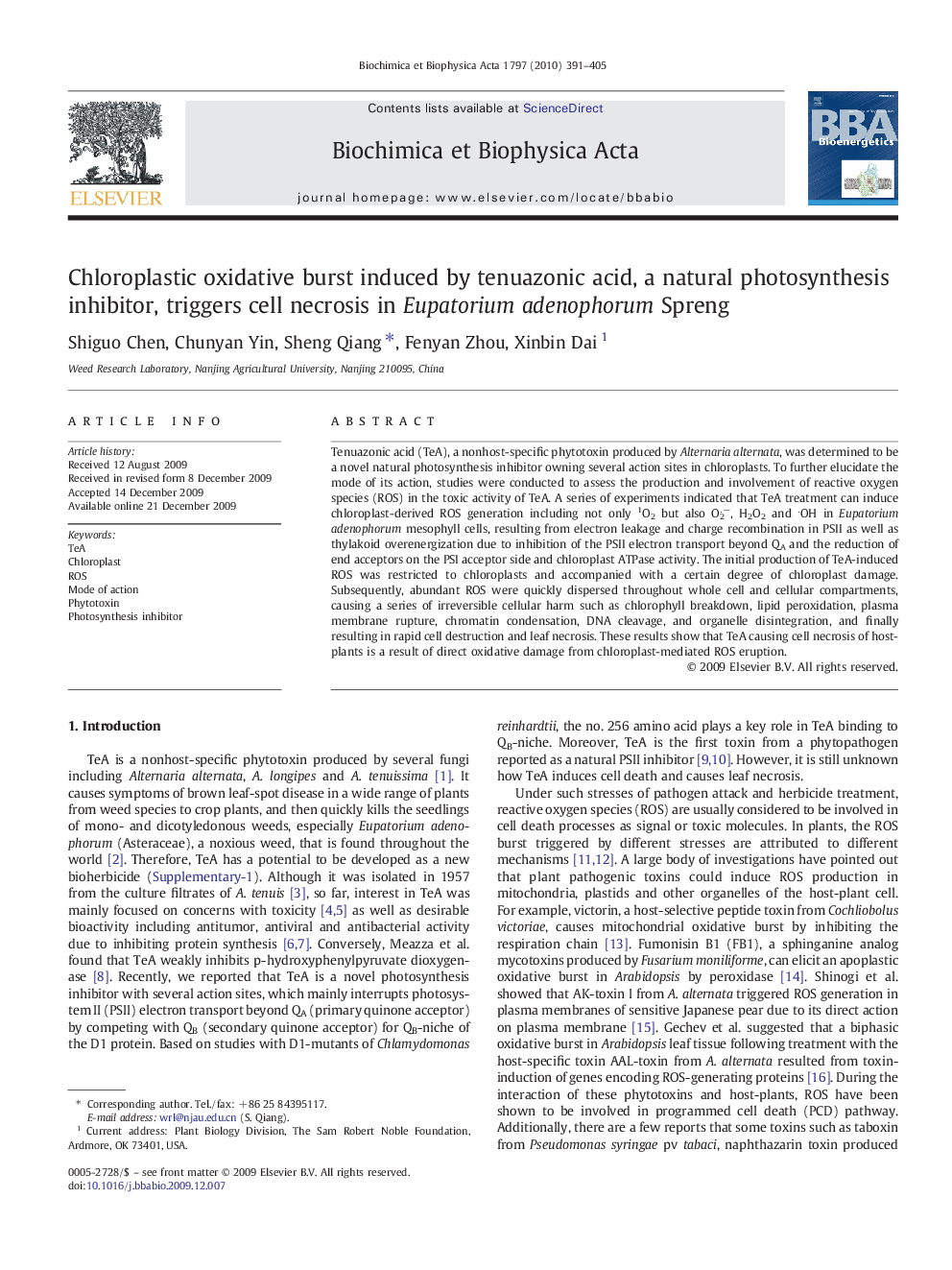| Article ID | Journal | Published Year | Pages | File Type |
|---|---|---|---|---|
| 1942900 | Biochimica et Biophysica Acta (BBA) - Bioenergetics | 2010 | 15 Pages |
Tenuazonic acid (TeA), a nonhost-specific phytotoxin produced by Alternaria alternata, was determined to be a novel natural photosynthesis inhibitor owning several action sites in chloroplasts. To further elucidate the mode of its action, studies were conducted to assess the production and involvement of reactive oxygen species (ROS) in the toxic activity of TeA. A series of experiments indicated that TeA treatment can induce chloroplast-derived ROS generation including not only 1O2 but also O2−, H2O2 and OH in Eupatorium adenophorum mesophyll cells, resulting from electron leakage and charge recombination in PSII as well as thylakoid overenergization due to inhibition of the PSII electron transport beyond QA and the reduction of end acceptors on the PSI acceptor side and chloroplast ATPase activity. The initial production of TeA-induced ROS was restricted to chloroplasts and accompanied with a certain degree of chloroplast damage. Subsequently, abundant ROS were quickly dispersed throughout whole cell and cellular compartments, causing a series of irreversible cellular harm such as chlorophyll breakdown, lipid peroxidation, plasma membrane rupture, chromatin condensation, DNA cleavage, and organelle disintegration, and finally resulting in rapid cell destruction and leaf necrosis. These results show that TeA causing cell necrosis of host-plants is a result of direct oxidative damage from chloroplast-mediated ROS eruption.
